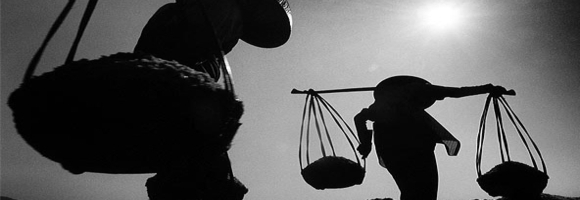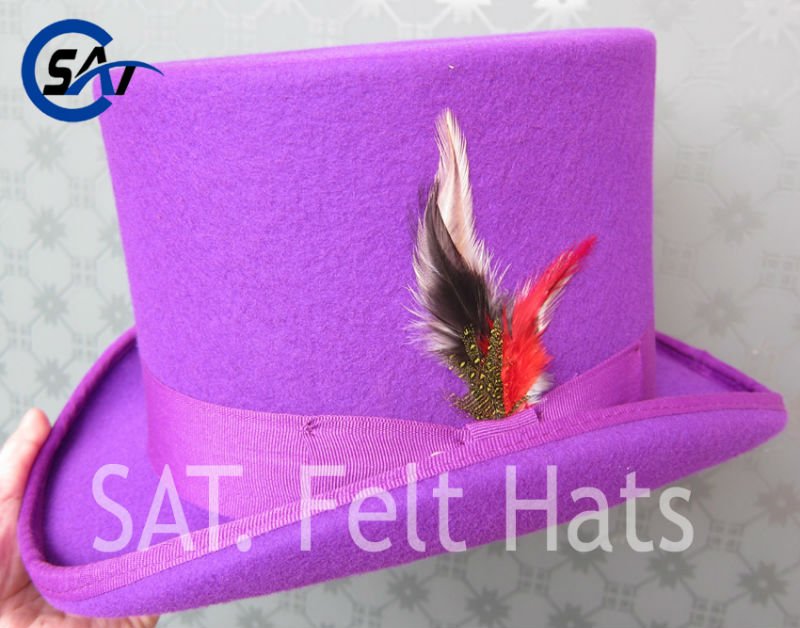I don't remember how, exactly, but this got crossed the other day with thinking about D&D and potions.
D&D has potion mixing and potion tasting charts. Often they do nothing, or create a poison, or mix effects, or whatever. In any case, it seems like the common thing to do with strange bottles of weird liquids recovered from a wizard's study is to try them out. I imagine the conversation going like this:
DM: You've slain the basilisk standing guard out front, and you open the door to a crowded laboratory. Bottles, flasks, and retorts line the walls and teeter precariously on a large wooden table, covered with illegible notes and scratches. Everything is covered in dust.
Player: Cool! I look through and see if there's anything that looks valuable! Are there any potions?
DM: You grab a whole bunch of bottles and stuff them into your knapsack, but there are too many to fit all of them, so you have to leave the lion's share behind-
Player: Oh, we're definitely coming back here, with a caravan!
DM: Right, but for now you have to leave some behind.
Player: OK, OK. Are any of them potions?
DM: You don't know. None of them have readable labels. Some of them have no labels at all.
Player: Fine, how can we test them?
DM: Lots of ways. The same way you test anything, really. It's not like you're carrying a Potion Testing Kit in your backpack - are you?
Player: No. Huh. Okay...potions are meant to be drunk right? I drink one, and see what it does!
DM: Are you sure? It might have hostile effects, and you'll have used it up regardless of what it does.
Player: Okay, okay...I got it. I'll uncork it and try a little taste. That should work, right? I mean, even if it's poison, it'll only be a little bit.
The thing that struck me is that ransacking the wizard's laboratory is one of the few actual touchstones we have with real life. Arcane alchemy captures a sense of wonder and strangeness that doesn't have much place out here in Paper & Paychecks, but one thing we do have is strange arcane chymical laboratories with truly strange and wonderful things on the shelves outside normal human experience.
However, in real life, most of these things aren't exactly meant for human consumption. In real life, wizards have rocket fuel on their shelves.
The thing about these strange and wonderful chemicals is they require careful handling. Some of them are so reactive that uncorking the bottle might kill you, if you're careless about it. Almost all of them are so reactive that yes, a tiny sip is a very bad idea.
What's a thousand words worth when you can have some examples?
High Test Peroxide
Peroxide's normal, right? I have some under the bathroom sink right now! Sure, but that stuff's at 5% strength. At 40% the stuff starts getting interesting. At 70% it's a rocket monopropellant - meaning it's so reactive (in the presence of lots of catalysts) by itself that it'll violently explode.Here's an example
I was unable to find an example of someone reacting HTP with meat, but you can extrapolate from what happens when you pour your household stuff onto an open cut what'll happen - except those bubbles will be strong enough to become an explosion.
HTP should be stored in an opaque bottle in a sealed place, else the light and heat will cause it to slowly degrade. Or quickly.
Why a wizard wants it: You mean your wizards need excuses to play with explosives? Fine. HTP can easily also be used to spark other reactions, and probably has a pivotal role in the distillation of Bloom of Giant's Eye (a solid, metallic substance that's one of the primary 'less dangerous' sources of small amounts of orichalcum, since it only involves harvesting the eyes of storm giants).
Fuming Nitric Acid
(Also all sorts of other nitric substances)I don't really need to say much about this, do I? It's nitric acid; it's an acid. But concentrations powerful enough to be used as rocket fuels exist and should exist in a wizard's lab. (It's also useful for other stuff.)
Two 'common' variations are called White Fuming Nitric Acid (or WFNA) and Red Fuming Nitric Acid) or RFNA. These things are so nasty they're usually mixed with a 'inactivating agent' to keep them from eating away the bottle you want to store them in.
(Skip to 4:42 if you don't care about the rest.)
Why a wizard wants it: Fuming Nitric Acid is an essential tool for the distillation of just about anything. In the real world, nitric acid is an industrial chemical for a reason: it's too damn useful. Same thing in fantasy; fuming nitric acid is probably an essential reagant in many, many reactions that eventually lead to those Potions of Gnome Control that litter your campaign world. There's a reason not just anyone becomes an alchemist, and most wizards are crazy.
Hydrazine
Hydrazine is an odorless, colorless chemical that to the eye and touch seems just like water. It's also pretty stable on its own, but when mixed with oxidizers (like the nitric acid shown above, or many of its byproducts) will violently explode.In fact, the explosion is so violent that hydrazine is still used in rockets today. The Soyuz rocket that sends astronauts to the ISS runs on hydrazine and nitrogen tetroxide (one of the byproducts of a nitric acid reaction in some cases). Careful jostling it around with other potions; if a flask breaks your backpack may explode!
However, we're interested in a taste test. Unfortunately for adventurers, its reactivity is outmatched by its toxicity. A mouthful or even a sip may very well kill you.
Case Study of Hydrazine Poisoning
In a 1965 correspondence from F. James Reid to the British Medical Journal, the effects of accidental hydrazine ingestion can be seen.
A young English sailor had been drinking beer during the afternoon before being placed on duty in the evening. He was considered to be fit for duty and competent until the accident. While working in his ship's engine room, the young sailor ingestion between a mouthful and a cupful of concentrated Hydrazine believing it was water.
Immediately upon drinking the chemical, the sailor vomited and returned to the deck to report to his superior officer at 11:30pm. After having been given a raw egg and milk, he vomited once more and collapsed, unconscious onto the floor.
- Hydrazine, greatly diluted, was used on board the ship to prevent corrosion in the ship's boilers by seawater.
Upon admission in a West African Hospital at midnight he was flushed, afebrile, unconscious, continent, and vomiting. His pupils were dilated, central and reacted to light; however, there were no chemical burns on his lips or mouth and he was able to swallow. At this time the respiratory and central nervous systems were normal upon clinical examination.
In response to the accident, the stomach was washed out with warm water which was partially siphoned and vomited back. He was given intramuscular chloroquine sulphate due to the prevalence of malaria in the region; cyanocobalamin, because the chemical was believed to have a cyanide-like effect; and ascorbic acid all intravenously with dextrose, dextrose-saline, and Hartmann's solution. These chemicals were given in all three liters over a period of 16 hours. The patient then passed 600ml of alkaline urine via a catheter, with the condition of his bladder at that time remaining unknown.
Twelve hours after the ingestion of the hydrazine, his condition remained unchanged with the exception that vomiting had ceased and the pupils were smaller and divergent to the right. Two episodes of violence requiring restraint by four strong African nurses also occurred.
Sixteen hours after ingestion, the patient was more flaccid and once again violent; it was decided to send him to the U.K. by air. 33 hours after the accident, the patient was flown out; however, once reaching France, the pilot of the aircraft refused to accept responsibility of the patient as his respiration became irregular and shallow.
48 hours after the accident the patient was admitted to a Paris hospital. His condition upon arrival was described as comatose and convulsive. He was intubated under anesthesia and given mechanically assisted respiration for the next ten hours; he was also given 10% dextrose and vitamin B.
The patient improved hour by hour, though the main concern was for his neurological state. His psyche, memory, voluntary motor skills, and higher functions were normal. However, he had ataxia even with his eyes open, a lateral nystagmus to the right, and a loss of vibration sense. He was unable to write, though he could draw. There was paresthesia of all four limbs at the extremities and he was unable to reproduce one hand movement imposed upon the other. Severe hypoesthesia of the hand (especially the right hand), in distribution of the radial nerve ensued. E.E.G. results were within normal limits and tendon reflexes were normal. Fortunately, the ataxia was improving to the point that the sailor would able to travel unescorted by air to England, only two weeks after leaving Africa.
- The final condition of the young man is not known.
With all that in mind, I recommend the use of a new table:
Sipping random bottles from a wizard's laboratory table: (roll 1d6)
- The stuff explodes in your mouth. Save vs. poison or die messily. If you pass, take 1d4 damage.
- Horrible poison. Save vs. poison or die.
- Nefarious poison. No immediate effect, but you will die in 1d4 days and start feeling ill in 12 hours. No save.
- Hyper-volatile! Uncorking the flask causes it to react with air. Save vs. wands or have your hand blown off, taking 1d4 damage, and everyone nearby save vs. paralysis or get splashed. Those splashed take 1d4 damage.
- No effect. It's inert, I guess.
- Huh, this might actually be meant for human consumption. Roll on another chart to determine what potion it is. (Don't forget to include lamp oil and 'normal' poisons.)
Don't swig random chemicals. Get an expert, or test them with objects other than your body.







